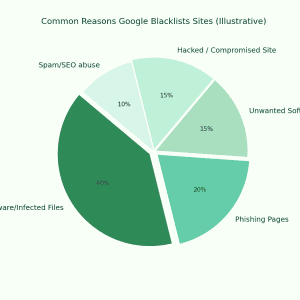Understanding Injection Attacks in Application Security: Types, Tools, and Examples
Injection attacks remain one of the most critical and pervasive threats in the realm of application security. These attacks occur when malicious input is injected into a web application, exploiting vulnerabilities in unvalidated or improperly sanitized data processing. Attackers use crafted payloads to manipulate how the application interprets commands, often leading to unauthorized access, data breaches, or complete system compromise.
Introduction to Injection Attacks
At its core, an injection attack targets the interaction between the application and its data-handling mechanisms. Common injection vulnerabilities arise when user inputs are directly incorporated into database queries, command-line executions, or other critical processing functions without adequate validation.
Injection attacks are not limited to SQL Injection; they extend across many vectors, including LDAP, OS commands, XML, and NoSQL injections. In 2024, the OWASP Top 10 still highlights injection as a key concern for application developers and security professionals.
Types of Injection Attacks
- SQL Injection (SQLi): The most notorious form where attackers insert malicious SQL commands to manipulate databases. SQLi can lead to data theft, data loss, or privilege escalation.
- Command Injection: Injection into OS commands, allowing attackers to execute arbitrary system commands with the privileges of the vulnerable application.
- LDAP Injection: Targets LDAP queries used in directory services, potentially allowing attackers to bypass authentication or modify LDAP entries.
- XML Injection: Exploits XML parsers by injecting malicious XML content, often used in SOAP or REST APIs.
- NoSQL Injection: Targets NoSQL databases like MongoDB by manipulating query parameters to bypass security controls.
How Injection Attacks Exploit Vulnerabilities
Injection occurs primarily due to inadequate input validation and poor coding practices. When applications fail to correctly sanitize, escape, or parameterize user inputs, they open the door for attackers to insert malicious code that the system executes or processes as legitimate commands.
For example, an unsanitized text input used directly in an SQL query can let an attacker inject additional SQL commands:
SELECT * FROM users WHERE username = '" + userInput + "';Here, if userInput contains SQL operators, it can alter the intended query logic.
Real-World Case Studies and Statistics
- Equifax Breach (2017): One of the most devastating SQL injection attacks in recent history compromised personal data of approximately 147 million people. The breach was caused by a failure to patch a known vulnerability related to input validation (source: FTC Equifax Settlement).
- Verizon Data Breach Report 2024 notes that nearly 30% of data breaches involve injection attacks, underlining their continued significance in cybersecurity (source: Verizon DBIR 2024).
- Modern IoT Devices are increasingly targeted with command injections due to weak input validation, as highlighted in recent security scans by independent researchers.
Tools for Detecting and Preventing Injection Attacks
Detecting injection vulnerabilities requires specialized tools and frameworks:
- Static Application Security Testing (SAST): Analyzes source code before deployment to find injection flaws.
- Dynamic Application Security Testing (DAST): Simulates attacks against running applications to detect injection points.
- Web Application Firewalls (WAFs): Provide runtime protection by filtering malicious inputs.
- Fuzz Testing: Automated injection of random inputs to identify unexpected behavior or vulnerabilities.
Leading tools like OWASP ZAP, Burp Suite, and SQLMap are instrumental in identifying and mitigating injection risks effectively.
Best Practices for Mitigating Injection Attacks
The cornerstone of preventing injection attacks lies in secure coding and comprehensive input handling:
- Use Prepared Statements (Parameterized Queries): This ensures that user inputs are treated strictly as data rather than code.
- Input Validation and Sanitization: Validate inputs for expected data types, length, and format.
- Least Privilege Principle: Database and system accounts should have minimum permissions necessary.
- Regular Security Audits: Frequent code reviews and penetration testing can uncover hidden vulnerabilities.
- Implement Web Application Firewalls: Protect live applications by monitoring and blocking suspicious input patterns.
Conclusion
Injection attacks remain a formidable threat in the evolving landscape of application security. Understanding their mechanisms, staying updated with the latest research and attack patterns, and employing robust testing tools are vital to safeguarding applications against these exploits.
By adopting best coding practices and leveraging advanced detection tools, organizations can significantly lower their injection risk profile, protecting sensitive data and maintaining trust in their digital platforms.



